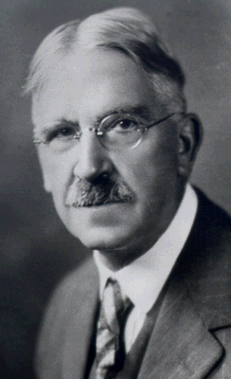
LAI 506
Foundations of Early Childhood Education
THE PROJECT APPROACH:
An Overview

The Project Approach is based in part on the work of John Dewey (1859-1952). Dewey believed that education is the reconstruction of experience. He and his colleagues at the University of Chicago developed the approach over the period of 1896-1903 (Clark, 2006). Dewey argued in favor of ongoing, experiential learning, challenging the traditional view of the student as a passive recipient of knowledge and the teacher as the transmitter of facts. Dewey believed that "Education is not preparation for life; education is life itself" (Knoll, 1997).
"Students in a project method environment should be allowed to explore and experience their environment through their senses and, in a sense, direct their own learning by their individual interests. Very little is taught from textbooks and the emphasis is on experiential learning, rather than rote and memorization. A project method classroom focuses on democracy and collaboration to solve "purposeful" problems"
Thomas Kilpatrick (1918)
When Dewey moved to Columbia University, his colleague William Kilpatrick (1871-1965) popularized the approach as the "Project Method." Kilpatrick defined a project as a "purposeful activity." He devised four classes of projects for his method: construction (ex: writing a story), enjoyment (ex: seeing a play), problem (ex: discussing a complex social problem like discrimination), and specific learning (ex: learning of skills such as sewing). The ideal progression was when all four phases were initiated and completed by the students and not by the teacher. Kilpatrick argued that students must be allowed to exercise "freedom of action" in order to gain independence and develop the character traits that Kilpatrick believed were essential for the preservation and advancement of democracy (Knoll, 1997).
"Knowledge is not absolute, immutable, and eternal, but rather relative to the developmental interaction of man with his world as problems arise to present themselves for solution"
John Dewey (1910)
Though Kilpatrick was a disciple of Dewey, their ideas regarding project-based learning were not identical. Unlike Kilpatrick, Dewey regarded project work as only one of many methods of teaching rather than the "only way out of educational confusion" (Dewey, 1931, p. 87).
Furthermore, Dewey objected to Kilpatrick's one-sided orientation on the child. Instead, Dewey emphasized the role of the teacher in providing guidance and direction to students, who, he believed, were incapable of planning projects on their own (Knoll, 1997).

